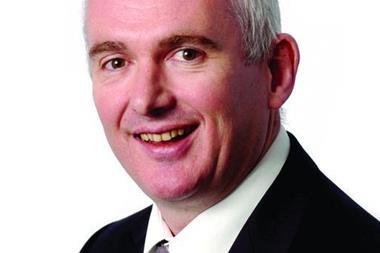Hastings will need to back up its growth story with robust explanations and data to win over analysts
Hastings Group is going places fast. The company – a combination of broker Hastings Insurance Services and Gibraltar-based insurer Advantage – saw its EBITDA increase 145% for the year to 30 June 2011. Some 75% of this is broking profit, with the balance coming from underwriting.
The task of bringing Hastings and Advantage into a new holding company in preparation for flotation is not yet complete, but the company issued its first results as a combined entity yesterday to give the market an indication of what to expect when the change is finalised early next year.
Hastings anticipates more growth to come: the company now expects to become a top five personal lines broker in early 2012 instead of its original projection of 2014. It has also set a goal for 2020 of a 10% UK market share.
This could stand Hastings Group in good stead for its forthcoming initial public offering. Generally speaking, the markets love a good growth story. Until recently the markets loved Admiral, a fast-growing company that Advantage – soon to be renamed Hastings Insurance Company (Gib) Limited – is beginning to resemble more with its use of quota share reinsurance and co-insurance arrangements.
Slow and steady wins the race
However, caution is needed. Analysts have started to become more sceptical of companies that grow quickly on the underwriting side of the business.
Despite stellar growth and underwriting profits, Admiral has recently fallen out of favour with some analysts. While Hastings and Advantage is not aiming to transform itself into an Admiral carbon copy, companies with similar elements may be treated with suspicion and will need to produce a robust strategy explanation as well as good reserving numbers.
There is also a growing appreciation of restraint. Analysts praised RBS Insurance’s recent presentation – its first to the City ahead of 2012’s IPO – for its realistic-sounding projections and strong focus on returns over expansion.
Attack and defend
Hastings chief executive Ed Fitzmaurice explains his company has several lines of defence in place to ensure profitable growth. His company has invested heavily in people and fraud-prevention techniques, it avoids high-risk and fraud prone areas, and faces reviews of its underwriting both from external actuaries and its supporting panel of reinsurers.
However, as with RBSI, Hastings will need to back up this good work with detailed data and consistently strong performance to win the markets over. The company also needs to wean itself from the more comforting EBITDA numbers it currently reports to the harsher reality of profit after tax. While the company’s growth prospects certainly look good, Hastings will need to present a robust all-round story to get analysts on-side.
Hosted by comedian and actor Tom Allen, 34 Gold, 23 Silver and 22 Bronze awards were handed out across an amazing 34 categories recognising brilliance and innovation right across the breadth of UK general insurance.













































No comments yet